Table of Content
- Key Takeaways
- Understanding Digital Experience
- Building Modern Digital Experiences
- Enhancing Digital Customer Experiences
- Utilizing Data for Personalization
- Empowering the Digital Journey
- Humanizing Digital Interactions
- Technology Stack Integration
- Challenges and Solutions
- Closing Thoughts
- Frequently Asked Questions
- Key Takeaways
- Understanding Digital Experience
- Building Modern Digital Experiences
- Enhancing Digital Customer Experiences
- Utilizing Data for Personalization
- Empowering the Digital Journey
- Humanizing Digital Interactions
- Technology Stack Integration
- Challenges and Solutions
- Closing Thoughts
- Frequently Asked Questions
In the world of today, a seamless digital experience along the customer journey can make or break a brand, impacting customer loyalty, personalized experiences, and competitive advantage. Picture this: a user-friendly interface that captivates your audience versus a clunky, outdated website that drives them away. The contrast is stark. Embracing the digital realm means engaging customers in ways never imagined before. It's about creating a digital customer experience in online journey that wows and delights, leaving a lasting impression.
The key lies in understanding how to craft a digital experience that resonates with your audience, driving loyalty and growth. Join us as we delve into the realm of digital experiences, exploring strategies to elevate your brand and leave competitors in the dust.
Key Takeaways
- Focus on Personalization: Utilize data to tailor digital experiences to individual customer preferences, enhancing engagement and satisfaction.
- Prioritize Seamless Interactions: Humanize digital interactions by emphasizing empathy and understanding in customer communication, creating a more authentic and meaningful experience.
- Integrate Technology Strategically: Ensure a cohesive technology stack integration to streamline processes, enhance efficiency, and provide a unified digital journey for customers.
- Address Challenges Proactively: Identify challenges in building modern digital experiences and implement solutions to overcome obstacles, fostering continuous improvement.
- Empower Customers: Enhance digital customer experiences by empowering users with tools and resources that facilitate their digital journey, promoting self-service and efficiency.
- Stay Agile and Adaptive: Keep pace with evolving digital trends and customer expectations by remaining agile, adaptive, and responsive to changes in the digital landscape.
Understanding Digital Experience

Defining the Basics
Digital experience encompasses all interactions between individuals and digital interfaces. It includes websites, apps, and online platforms. Technology plays a pivotal role in shaping digital experiences by enabling seamless interactions and personalized content delivery. Optimizing digital touchpoints ensures a smooth and engaging user journey to enhance customer experience.
Importance in Business
Enhancing digital experience is crucial for attracting new users to a business's online platforms. It creates a competitive edge by offering unique and user-centric experiences. Managing digital experiences can be complex due to the need for continuous updates and monitoring to meet evolving user expectations.
Key Components
- Successful digital experiences comprise essential elements such as intuitive navigation, responsive design, and fast loading times.
- User interface (UI) and user experience (UX) design are critical components that determine how users interact with digital interfaces.
- Content personalization tailors information based on user preferences, enhancing engagement and satisfaction levels.
Building Modern Digital Experiences
Rapid Development Strategies

Creating digital experiences efficiently involves implementing rapid development strategies. One approach is utilizing agile methodologies, breaking down projects into smaller tasks for quicker completion. This method ensures continuous feedback and adaptation throughout the development process.
Rapid prototyping is crucial in the realm of design as it allows designers to quickly visualize concepts, gather feedback, and make necessary adjustments promptly. By iterating on prototypes, teams can refine the digital experiences based on user input, leading to more user-centric designs.
Integration Techniques
Integrating various digital platforms is essential for providing a seamless user experience. APIs play a significant role in connecting different systems and enabling data exchange between applications. This integration ensures that users can access services across multiple platforms effortlessly.
To guarantee compatibility across diverse systems, developers must focus on creating interoperable solutions. By adopting standardized protocols and formats, such as RESTful APIs, developers can ensure smooth communication between different components of the digital experiences they are building.
Automation for Efficiency
Automation plays a vital role in enhancing digital experiences by streamlining processes and reducing manual intervention. Tools like workflow automation software enable organizations to automate repetitive tasks, freeing up time for more strategic initiatives. This efficiency leads to faster delivery of high-quality digital solutions.
Incorporating artificial intelligence (AI) into digital experience design automates customer interactions through chatbots and virtual assistants. AI-powered systems can analyze user behavior, personalize content delivery, and provide real-time support, enhancing overall user satisfaction and engagement.
Enhancing Digital Customer Experiences
Personalization Tactics
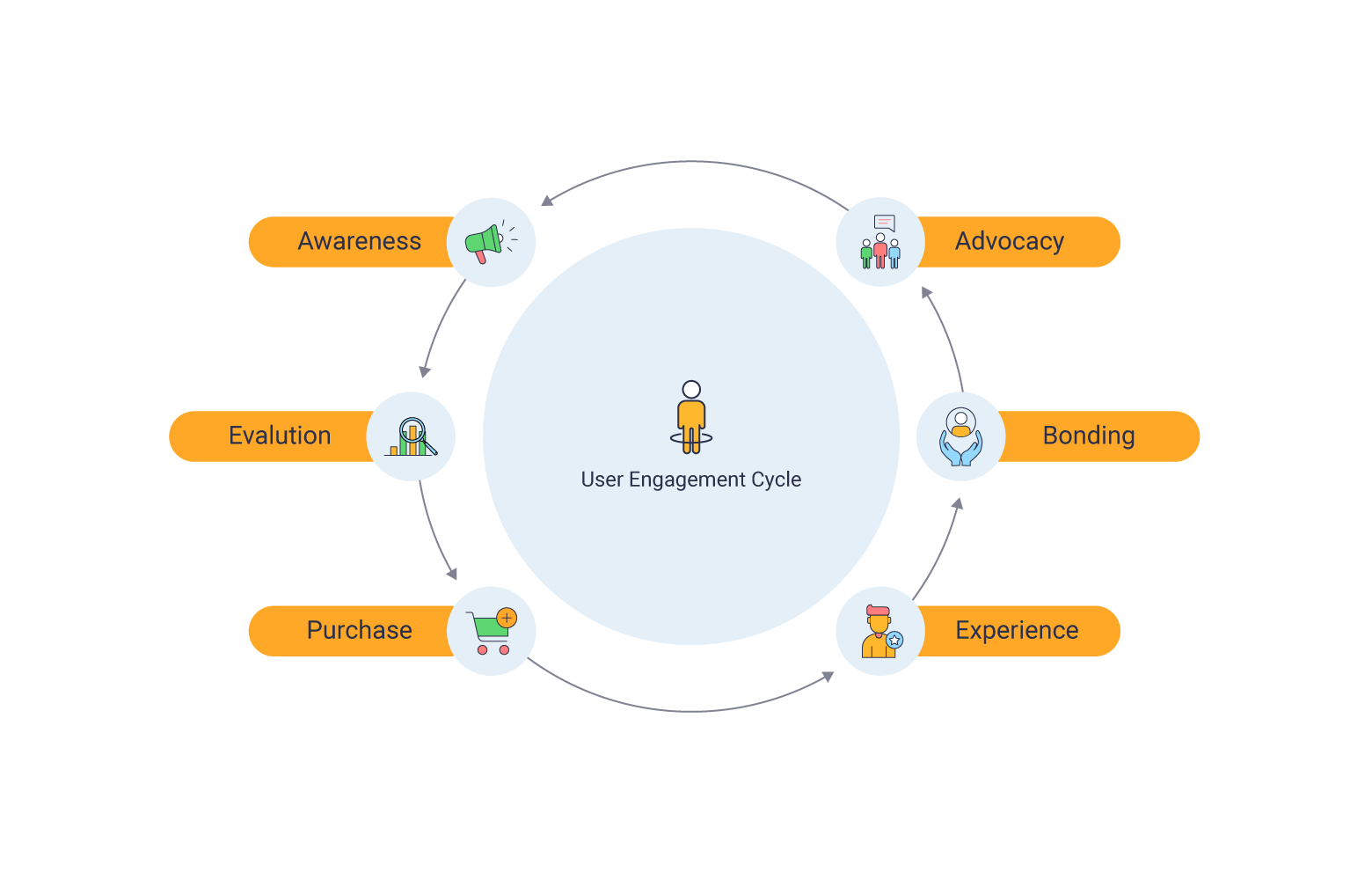
Personalizing digital customer experiences can significantly boost user engagement levels. By tailoring content to individual preferences, companies can create more relevant interactions. Utilizing data-driven insights allows for accurate customization based on user behavior.
Implementing strategies for personalization involves analyzing user data to understand preferences and behaviors better. This enables businesses to deliver targeted content and recommendations that resonate with each user. By leveraging digital channels, companies can offer personalized product suggestions, promotions, and communication tailored to individual needs.
Data-driven personalization techniques are crucial in enhancing user experiences. By utilizing analytics and machine learning algorithms, businesses can predict user preferences accurately. This leads to higher conversion rates, improved customer satisfaction, and increased loyalty towards the brand.
Seamless User Journeys
User journeys in digital experiences refer to the path a customer takes while interacting with a website or application. Creating seamless transitions between touchpoints is vital for providing a cohesive experience. Optimizing user journeys involves ensuring smooth navigation and minimal friction throughout the entire process.
To enhance user journeys, businesses need to map out different touchpoints and identify potential areas for improvement. By streamlining processes and reducing unnecessary steps, companies can create a more efficient and enjoyable experience for users. Optimized user journeys contribute to higher conversion rates and increased customer retention.
Improving digital customer experience through optimized user journeys requires continuous monitoring and refinement. Companies should gather feedback from users to identify pain points and areas of improvement. By iteratively enhancing the journey based on user insights, businesses can create a more seamless and satisfying experience for their customers.
Humanizing Interactions
Human-centered design plays a crucial role in creating engaging digital experiences. Adding a human touch to interactions involves understanding user emotions, motivations, and preferences. By incorporating elements of empathy into design processes, companies can develop solutions that resonate with users on a deeper level.
Strategies for humanizing interactions include using conversational language, empathetic messaging, and interactive features that mimic real-life interactions. By focusing on creating meaningful connections with users, businesses can foster trust and loyalty. Empathy-driven design leads to more intuitive interfaces and engaging experiences that prioritize user needs.
Empathy is key in designing digital customer experiences that prioritize the human element over technology alone. By putting users at the center of design decisions, companies can create products and services that truly cater to their needs and emotions.
Utilizing Data for Personalization
Data Collection Methods
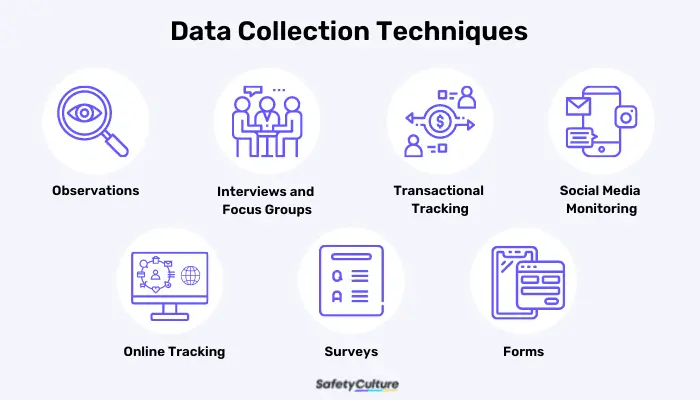
User data can be collected through various methods such as website cookies, surveys, and social media interactions. Ensuring data privacy is crucial to maintain trust with customers. Analytics plays a vital role in personalizing user experiences.
Pros:
- Enables targeted marketing
- Improves customer engagement
Cons:
- Privacy concerns
- Data security risks
Analyzing Customer Insights
Analyzing customer data provides valuable insights for enhancing digital experiences. Tools like Google Analytics and heatmaps aid in extracting actionable information from data. Feedback loops are essential for iterative improvements.
- Identify key metrics
- Use segmentation for detailed analysis
- Implement A/B testing for optimization
Delivering Custom Experiences
Tailored experiences can be delivered by utilizing user preferences, past behavior, and demographics. Customization significantly impacts user satisfaction levels positively. Dynamic content plays a pivotal role in creating personalized journeys.
Strategies:
- Recommender systems
- Personalized emails
Empowering the Digital Journey
Tools and Platforms
Digital experiences rely heavily on tools and platforms that enable the creation of engaging online environments. Popular tools such as Adobe Experience Manager and WordPress offer user-friendly interfaces for building websites with interactive elements. These tools provide drag-and-drop functionalities, making it easier for users to design and customize their digital experiences without extensive coding knowledge.
Different digital experience platforms like Sitecore and Drupal offer unique features and capabilities catering to various business needs. Sitecore, known for its personalization features, allows businesses to deliver tailored content based on user behavior. On the other hand, Drupal's open-source nature provides flexibility for developers to create customized digital solutions. Choosing the right tool depends on factors like budget, scalability, and desired functionalities.
Selecting the appropriate tools is crucial for meeting specific business objectives. For instance, an e-commerce website might benefit from a platform with robust e-commerce integration capabilities, while a content-heavy site may prioritize a tool with strong content management features.
Strategies for Engagement
![Gamification Statistics and Facts [2023 Updated Data]](https://techreport.com/wp-content/uploads/2023/09/Gamification-Key-Statistics.webp)
Engaging users in digital experiences requires strategic approaches that captivate audiences. One effective strategy is gamification, which involves incorporating game-like elements such as rewards and challenges into the user experience. By gamifying interactions, businesses can increase user engagement and encourage repeat visits to their platforms.
Another powerful strategy is storytelling, where brands use narratives to connect with users on an emotional level. Story-driven content helps create memorable experiences that resonate with audiences long after they interact with a website or application. Through compelling storytelling, businesses can establish stronger relationships with their customers and differentiate themselves from competitors.
Incorporating these engagement strategies not only enhances the overall user experience but also fosters brand loyalty and drives customer retention.
Measuring Success
To evaluate the effectiveness of digital experiences, businesses must track key metrics that indicate success. Metrics like conversion rates, bounce rates, and session duration provide insights into user behavior and engagement levels. By analyzing these metrics, companies can identify areas for improvement and optimize their digital strategies accordingly.
Tools such as Google Analytics and Hotjar offer sophisticated tracking capabilities that enable businesses to monitor user interactions in real-time. These tools provide valuable data on user demographics, preferences, and browsing patterns, allowing companies to make data-driven decisions to enhance their digital experiences continually.
Continuous monitoring and optimization are essential components of measuring success in the digital realm. By regularly analyzing performance metrics and implementing iterative improvements based on data insights, businesses can ensure that their digital experiences remain relevant, engaging, and impactful.
Humanizing Digital Interactions
Beyond the Screen
Smart devices have revolutionized digital experiences, extending beyond traditional screens. The concept of omnichannel experiences involves seamless integration across various touchpoints. Integrating offline and online interactions enhances user engagement and creates a cohesive brand experience.
IoT devices play a crucial role in expanding digital experiences by connecting physical objects to the internet. They enable personalized, context-aware interactions that enhance user convenience and efficiency. Smart devices like wearables, home assistants, and connected appliances contribute to a more integrated digital ecosystem.
Emotional Connections
Emotional design significantly impacts user engagement in digital experiences. Creating emotionally resonant interactions fosters stronger connections with users, leading to enhanced loyalty and satisfaction. Strategies such as personalization, storytelling, and interactive elements evoke emotional responses from users.
Empathy is key to designing emotionally engaging experiences. Understanding user needs, preferences, and pain points enables the creation of meaningful interactions that resonate with users on a deeper level. Empathetic design leads to authentic connections that drive long-term engagement and loyalty.
Employee Experiences
Digital experiences are equally vital for enhancing employee productivity and satisfaction. By leveraging digital tools, organizations can streamline workflows, automate repetitive tasks, and empower employees to work more efficiently. Internal communication platforms facilitate seamless collaboration, knowledge sharing, and feedback mechanisms among employees.
Enhancing employee experiences through digital solutions boosts morale, job satisfaction, and overall productivity levels within organizations. Access to intuitive interfaces, real-time information, and collaborative tools enables employees to perform their tasks effectively while fostering a positive work environment.
Technology Stack Integration
Choosing the Right Tools

When selecting digital experience tools, it is crucial to consider factors such as functionality, ease of use, and integration capabilities. Scalability plays a vital role in accommodating future growth and ensuring that the tools can expand alongside the business. Flexibility is essential for adapting to changing market trends and consumer preferences.
Aligning digital experience tools with business objectives is paramount for achieving strategic goals. By choosing tools that align with the organization's vision and mission, companies can ensure that their digital experiences are in line with their overall strategy. This alignment enhances brand consistency and fosters a coherent customer journey.
Ensuring Compatibility
Ensuring compatibility across various devices and platforms poses a significant challenge in digital experience development. With the proliferation of smartphones, tablets, and laptops, optimizing digital experiences for different screen sizes is essential. Strategies such as responsive design enable websites and applications to adjust seamlessly to different devices, providing a consistent user experience.
Responsive design plays a crucial role in ensuring compatibility by allowing content to adapt fluidly to various screen sizes. This approach eliminates the need for separate mobile versions of websites or applications, streamlining maintenance efforts and reducing development costs. By prioritizing compatibility, organizations can reach a broader audience and enhance user engagement across multiple platforms.
Streamlining Processes
To streamline digital experience development processes, leveraging automation tools can significantly improve efficiency. Automation reduces manual tasks, minimizes errors, and accelerates time-to-market for digital products. By automating repetitive processes such as testing and deployment, organizations can focus on innovation and enhancing user experiences.
Collaboration tools play a pivotal role in improving efficiency by facilitating seamless communication and project management among team members. Platforms that enable real-time collaboration, document sharing, and task tracking enhance productivity levels within development teams. By fostering collaboration through integrated tools, organizations can expedite project timelines and deliver high-quality digital experiences.
Challenges and Solutions
Overcoming Obstacles
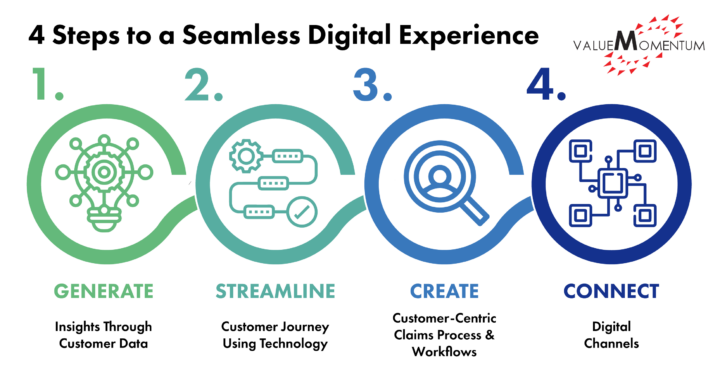
Frequently, digital projects encounter hurdles such as compatibility issues and slow loading times. These obstacles can impede the delivery of a seamless digital experience. To tackle these challenges, teams must prioritize optimizing website performance and ensuring cross-device functionality.
In addressing technical challenges, it is crucial to implement robust coding practices and leverage efficient frameworks. By streamlining the development process and conducting thorough testing, teams can mitigate risks associated with bugs or glitches that could compromise user experience.
To enhance user experience and eliminate bottlenecks, a focus on intuitive design and streamlined navigation is essential. By conducting usability tests and gathering feedback from users, organizations can identify pain points and make informed decisions to enhance overall digital interactions.
Best Practices
When designing digital experiences, adhering to industry best practices is paramount. Employing responsive design principles ensures that websites are accessible across various devices, enhancing user engagement and satisfaction. Integrating accessibility features caters to a diverse audience, promoting inclusivity.
User testing plays a pivotal role in refining digital experiences. By collecting feedback through surveys, interviews, or heat maps, organizations gain valuable insights into user preferences and behaviors. This iterative process enables continuous improvement based on real-world data rather than assumptions.
Continuous iteration is key to evolving digital design. By adopting an agile methodology, teams can respond swiftly to changing requirements and trends. Regularly incorporating user feedback allows for incremental enhancements that align with evolving consumer expectations.
Future Trends

The landscape of digital experiences is rapidly evolving with the integration of AI, AR, and VR technologies. These innovations offer immersive interactions that redefine user engagement across various platforms. As these technologies become more accessible, organizations must adapt their strategies to leverage their full potential.
AI-driven personalization enhances user engagement by delivering tailored content based on individual preferences. Augmented reality (AR) and virtual reality (VR) technologies create interactive experiences that blur the line between physical and digital realms, offering unique opportunities for storytelling and brand engagement.
Staying agile and adaptable is crucial in navigating future trends in digital experiences. As consumer behaviors shift towards more interactive and personalized engagements, organizations must embrace innovation while maintaining a customer-centric approach to meet evolving demands effectively.
Enhancing Digital Experiences

Creating a seamless and engaging digital experience is crucial for businesses looking to connect with their audience. MarketersMEDIA is a powerful platform that helps marketers amplify their message and reach a wider audience through press releases and media distribution.
By leveraging MarketersMEDIA, businesses can effectively communicate their brand message, product launches, and company updates to a global audience. This not only increases brand visibility but also enhances the overall digital experience for users who come across these press releases.
With MarketersMEDIA, businesses can ensure that their digital presence is strong and impactful, ultimately leading to better engagement and conversions. Whether you're a small startup or a large corporation, incorporating MarketersMEDIA into your digital marketing strategy can help take your digital experience to the next level.
Statistics on Digital Experience
Studies have shown that a whopping 75% of consumers are more likely to buy from a company that gives them digital experiences that are customized just for them. This means if a company knows what you like and need, and they show it to you on their website or app, you're more likely to make a purchase from them.
Companies that really put effort into making their digital customer experience top-notch can see some awesome benefits. About a 10-15% increase in revenue. That means they make more money just by making sure their customers have a great online shopping or browsing experience. Plus, they also see a 20% increase in customer satisfaction.
Focusing on digital experiences is a win-win situation for both companies and customers. When companies take the time to understand what their customers want and give it to them in a personalized way online, everyone ends up happy and successful. It's like having your favorite store know exactly what you like and showing you all the best stuff as soon as you walk in - except it's all happening on your computer or phone screen.
Closing Thoughts
You've journeyed through the realm of digital experience, discovering its essence, impact on customer interactions, and the power of personalization. By embracing technology and human touch, you can craft immersive digital journeys that resonate with your audience. Overcoming challenges through innovative solutions and seamless integration will pave the way for unparalleled user experiences.
As you navigate the digital landscape, remember that every interaction shapes the overall experience. Embrace data-driven insights, prioritize customer-centric approaches, and stay agile in adapting to evolving technologies. Your commitment to enhancing digital experiences will not only drive engagement but also foster lasting relationships with your audience. So, go forth and revolutionize your digital presence with newfound wisdom and inspiration.
Frequently Asked Questions
How important is understanding digital experience for businesses?
Understanding digital experience is crucial for businesses as it directly impacts customer satisfaction and loyalty. By grasping the intricacies of digital interactions, companies can tailor their strategies effectively, leading to enhanced user engagement and overall success.
What role does data play in personalizing digital experiences?
Data plays a significant role in personalizing digital experiences by providing insights into customer preferences and behaviors. Utilizing data allows businesses to create tailored experiences that resonate with users, fostering stronger connections and increasing engagement levels.
Why is humanizing digital interactions essential in today's landscape?
Humanizing digital interactions is vital as it helps build trust and rapport with customers in a virtual environment. By infusing empathy and personal touch into interactions, businesses can create meaningful relationships that drive brand loyalty and advocacy among users.
How can technology stack integration benefit a company's digital experience strategy?
Technology stack integration streamlines processes, enhances efficiency, and improves overall user experience. By seamlessly connecting different tools and systems, companies can deliver cohesive digital experiences that are seamless, intuitive, and engaging for their audience.
What are some common challenges faced in optimizing digital experiences, and how can they be overcome?
Common challenges include technical limitations, inconsistent user journeys, and lack of personalization. These hurdles can be overcome through robust testing, continuous optimization efforts, leveraging data insights, and prioritizing user-centric design to deliver exceptional digital experiences.
Free Press Release Template
Tell us where to send your PDF:
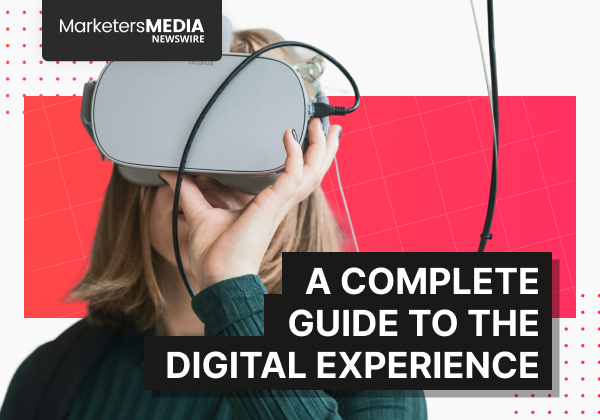




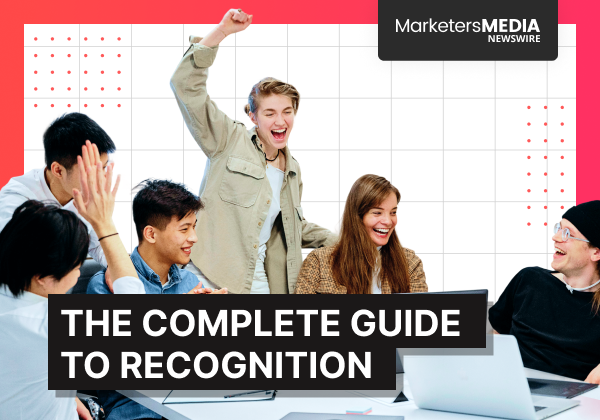

![10 Free Press Release Templates [Plus a Step-by-Step Guide]](https://marketersmedia.com/wp-content/uploads/2024/08/10-Free-Press-Release-Templates-Plus-a-Step-by-Step-Guide.png)